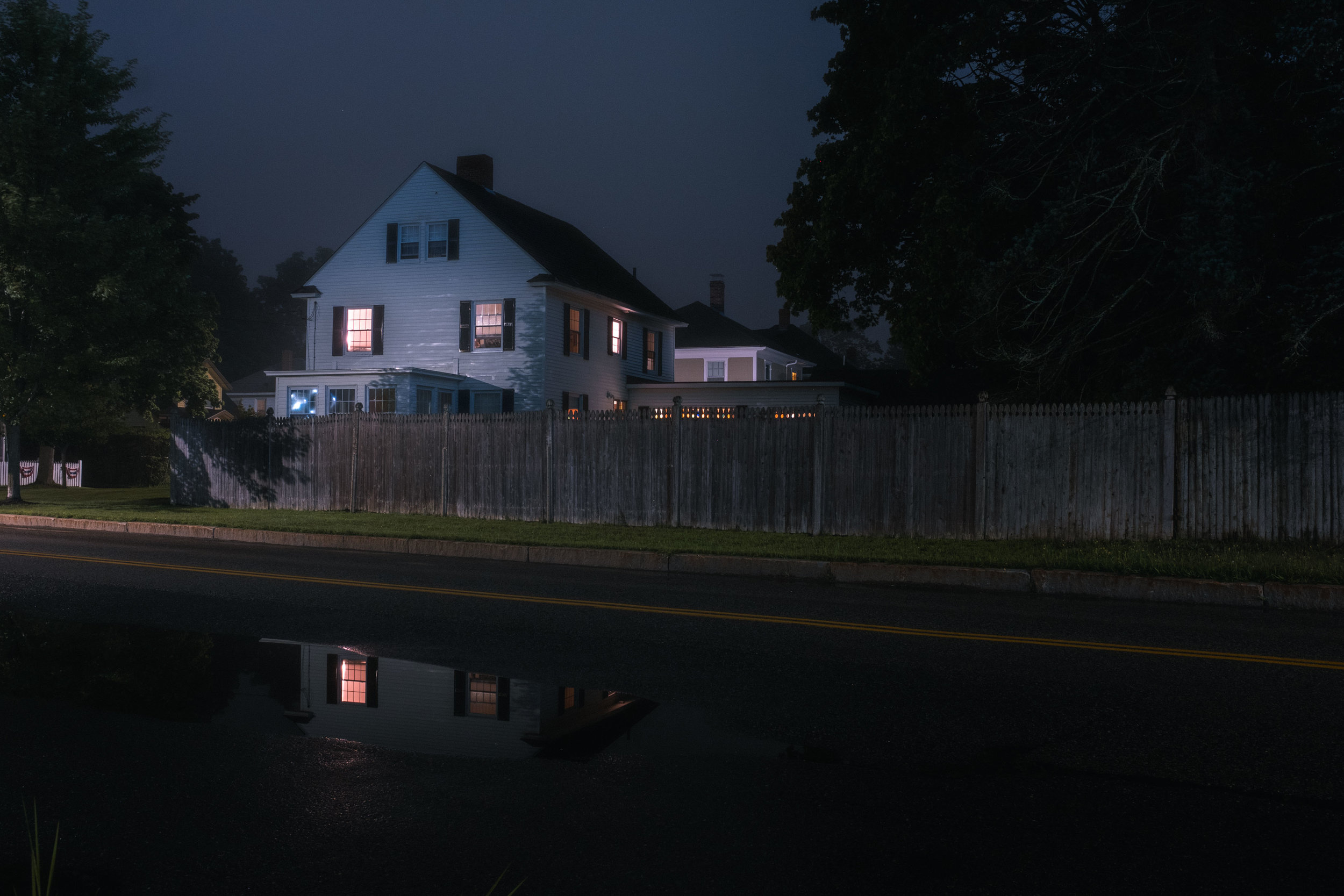Leland Foster Blurs Medium Lines with Slick & Suspenseful Oil Paintings
MIKE O'DONNELL / EDITOR
It’s not easy deciphering the difference between Leland Foster’s paintings, photographs, and animated illustrations. The distinctions are subtle, yet striking once discovered. It’s part of the sorcery of Leland’s approach. Staring at an idling car in a darkly lit lot of a convenience store, the stillness is interrupted only by the faint but steady fog of exhaust flowing from the tailpipe and captured by the glowing headlights. The word “cinematic” is overused in describing art but it’s easy to recognize the impermanent stillness typical of a suspenseful set piece in each of Leland’s works.
In our interview below, the Philadelphia-based artist talks about a career highlight working with Paul Simon and his ensuing shift from graphic design to working full-time as a freelance painter and illustrator. He also shares the joys of pushing his creative boundaries and what he hopes to accomplish within each medium that he’s exploring.
Tell us a bit about your creative background. Who is Leland and how did he get here?
I am originally from Portland, Maine. Both of my parents work in creative fields, my dad architecture and my mom graphic design, so an appreciation of the visual arts is something that’s been instilled in me since I was young. I started taking on illustration projects while I was studying at Binghamton University, mostly for bands, local businesses, and other miscellaneous acquaintances. When I graduated I went on to work as a graphic designer in New York. After four years of working in a fluorescent-lit office and commuting two hours a day from Brooklyn to Harlem, I decided I needed to shift my career trajectory so that I could dedicate more time to projects I cared about. I left New York and moved to Philadelphia, where I began working full-time as a freelance painter and illustrator.
How would you describe your creative style? Do you recognize a signature style that links your projects?
I tend to have a hard time analyzing my projects from an outside point of view, and for that reason I’m not sure I recognize a signature style that links my projects. I do know that my goal as an artist is to make art that is both thought-provoking and emotion-evoking. I aim to create images that allow audiences to stop and think, and perhaps to which they can apply their own narrative; so in that respect, I guess my artistic intent would be the one thing ties my work together.
“My goal as an artist is to make art that is both thought-provoking and emotion-evoking. I aim to create images that allow audiences to stop and think, and perhaps to which they can apply their own narrative.”
What do you see as the turning point in your creative development and career so far?
I would say anytime I push the creative boundaries of what I thought I was capable of serves as a turning point.
Oil Painting
Which of your projects are you proudest of and why?
While working as a graphic designer in New York, I had the opportunity to create promotional content for Paul Simon and a concert of his; meeting him in his office on 42nd street was a highlight of my career. Since then I’ve been guiding my workflow away from graphic design and towards painting and illustration. I occasionally work on illustrations for record labels, and collaborating with music artists can be a fun endeavor. Last year I was commissioned to paint a night scene of a Blockbuster Video store by a film director from Istanbul. The painting ended up being 4’x 6’ oil on canvas, and was my favorite commission so far. That being said, I’m always most proud of my personal projects since that’s when there aren’t any parameters I’m required to work within. I recently finished my first oil portrait, so right now that’s the piece I’m the most proud of.
What would be your dream project or job, or is it already on your resume?
I’m not sure I have a dream project. My artistic goals and interests shift a lot, so I try to go with the flow. As an illustrator, I’d love work on album covers. And as a painter, a solo gallery show is something I hope to achieve in the next few years.
Animated Illustration
“My artistic goals and interests shift a lot, so I try to go with the flow. As an illustrator, I’d love work on album covers. And as a painter, a solo gallery show is something I hope to achieve in the next few years.”
Who are your biggest creative influences?
Edward Hopper, Andrew Wyeth, Roger Deakins, Stanley Kubrick.
What are the products or tools that you can’t work without? What’s something you don’t own that would help you elevate your craft?
Oil paint, Wacom Tablet, Creative Cloud. Having more time in the day would be helpful.
One book, one album, one movie, one show. Go.
The Stand by Stephen King, Billy Joel’s The Stranger, No Country for Old Men (Blade Runner 2049 for cinematography), and The Wire on HBO.
What do you do when Not Working?
I spend a lot of time traveling around the United States taking photographs.
What’s something you’ve learned on your creative journey that you want to share with other artists?
Over the years (especially early on in my career), I’ve worked on projects that I’m not especially proud of or enthusiastic about having my name tied to. When you’re young and strapped for cash, it’s tempting to take on any job that has a paycheck. My only advice is to stay true to your artistic vision whenever possible, and if you’re motivated and your convictions are strong enough you’ll be successful.
Photograph
Photograph
Photograph
Animated Illustration








